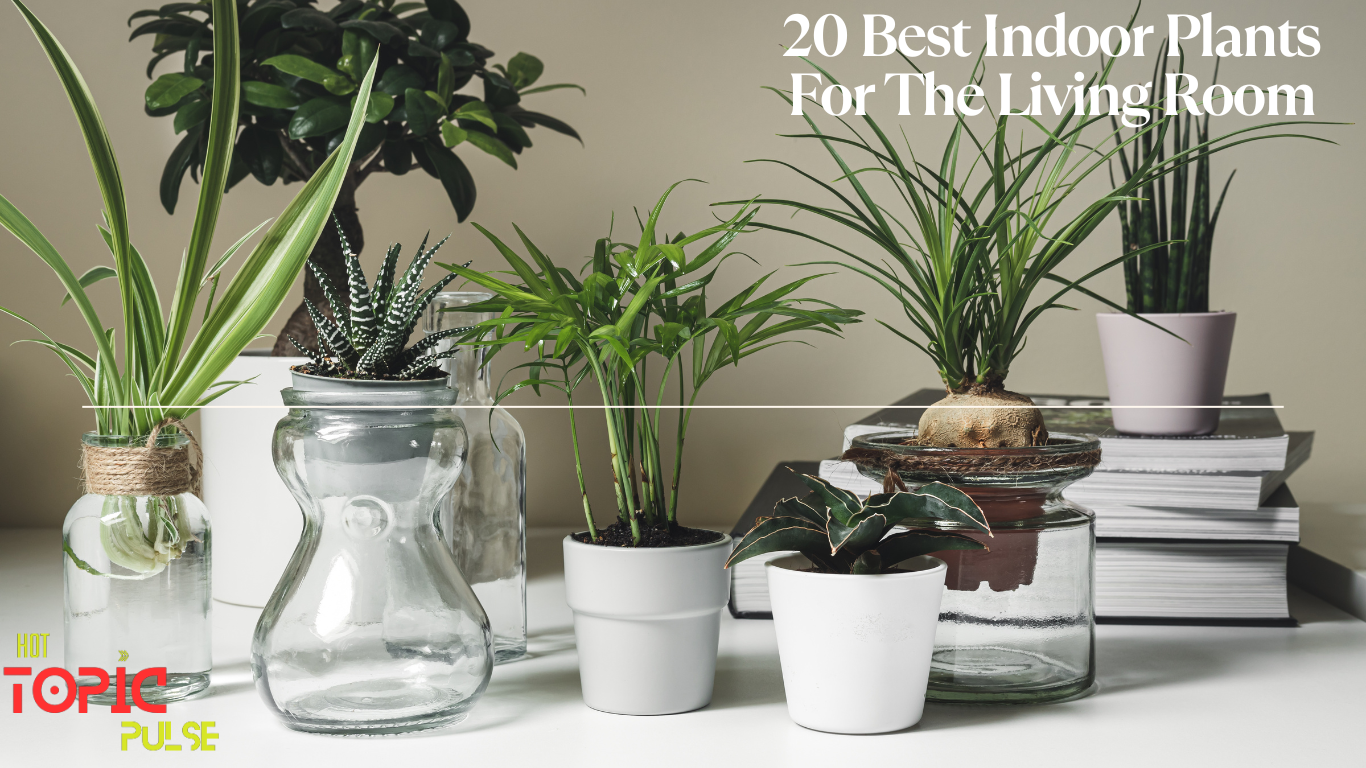
Imagine stepping into your living room and being greeted by a lush green paradise. Indoor plants do more than just add aesthetic appeal; they have numerous benefits for both your physical and mental well-being.
Indoor plants act as natural air purifiers, absorbing harmful toxins and releasing oxygen, creating a cleaner and healthier environment for you to breathe in. They can also help regulate humidity levels, reducing the risk of respiratory issues.
Moreover, having indoor plants has been shown to lower stress levels and promote relaxation. The presence of greenery indoors can enhance mood, boost productivity, and even improve concentration. This guide will help you choose the perfect indoor plants for your Living room
List Of 20 Best Plants For Living Room
- Snake Plant (Sansevieria trifasciata)
- Spider Plant (Chlorophytum comosum)
- Peace Lily (Spathiphyllum)
- Pothos (Epipremnum aureum)
- Philodendron
- ZZ Plant (Zamioculcas zamiifolia)
- Aloe Vera
- Succulents (various types)
- Fiddle Leaf Fig (Ficus lyrata)
- Rubber Plant (Ficus elastica)
- Dracaena
- Parlor Palm (Chamaedorea elegans)
- Chinese Evergreen (Aglaonema)
- Boston Fern (Nephrolepis exaltata)
- Monstera Deliciosa
- Cast Iron Plant
- Bird’s Nest Fern (Asplenium nidus)
- Maidenhair Fern (Adiantum)
- Anthuriums
- Croton (Codiaeum variegatum
1. Snake Plant (Sansevieria trifasciata)
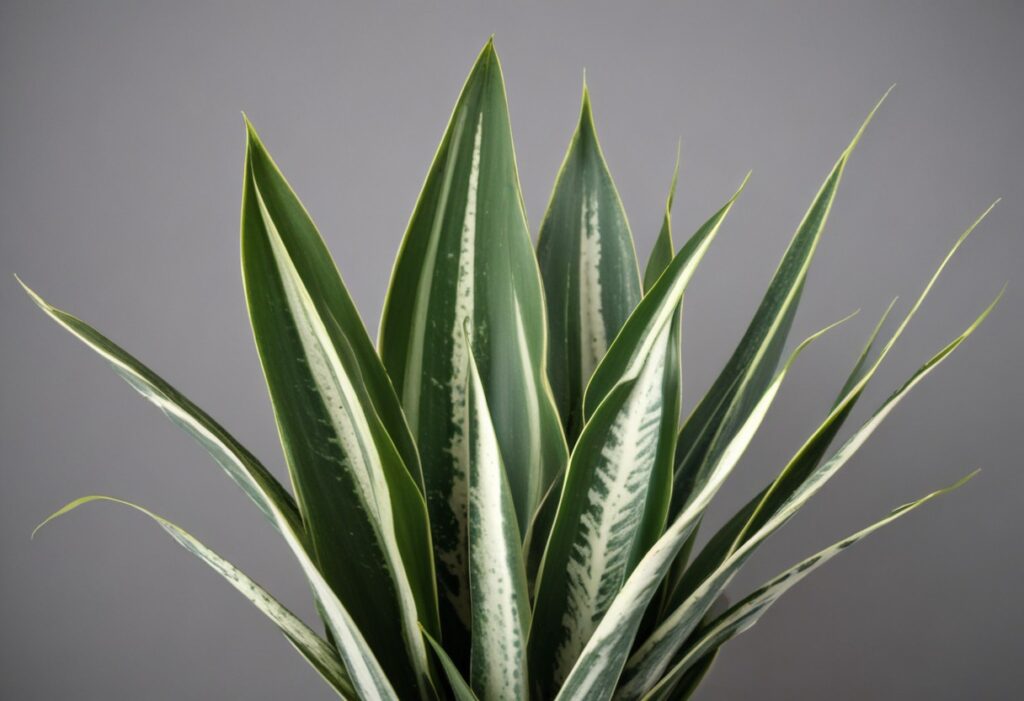
The Snake Plant, also known as Mother-in-Law’s Tongue, is a popular indoor plant appreciated for its striking sword-like leaves and ease of care. Native to West Africa, this plant thrives in a range of indoor conditions, making it an excellent choice for both novice and experienced plant enthusiasts. One of its most notable features is its ability to tolerate low light levels, although it also does well in bright, indirect light. The Snake Plant is incredibly hardy and can survive periods of neglect, making it perfect for busy individuals or those new to plant care. Its leaves are typically green with lighter green horizontal stripes, and some varieties have yellow edges.
Temperature: 60-85°F (15-29°C)
Watering: Allow soil to dry between waterings; water every 2-6 weeks depending on conditions.
Fertilizer: Feed monthly during the growing season with a balanced liquid fertilizer.
Container: Well-draining pot (terra cotta or plastic with drainage holes).
Size: Typically grows 1-4 feet tall and 6-12 inches wide
2. Spider Plant (Chlorophytum comosum)
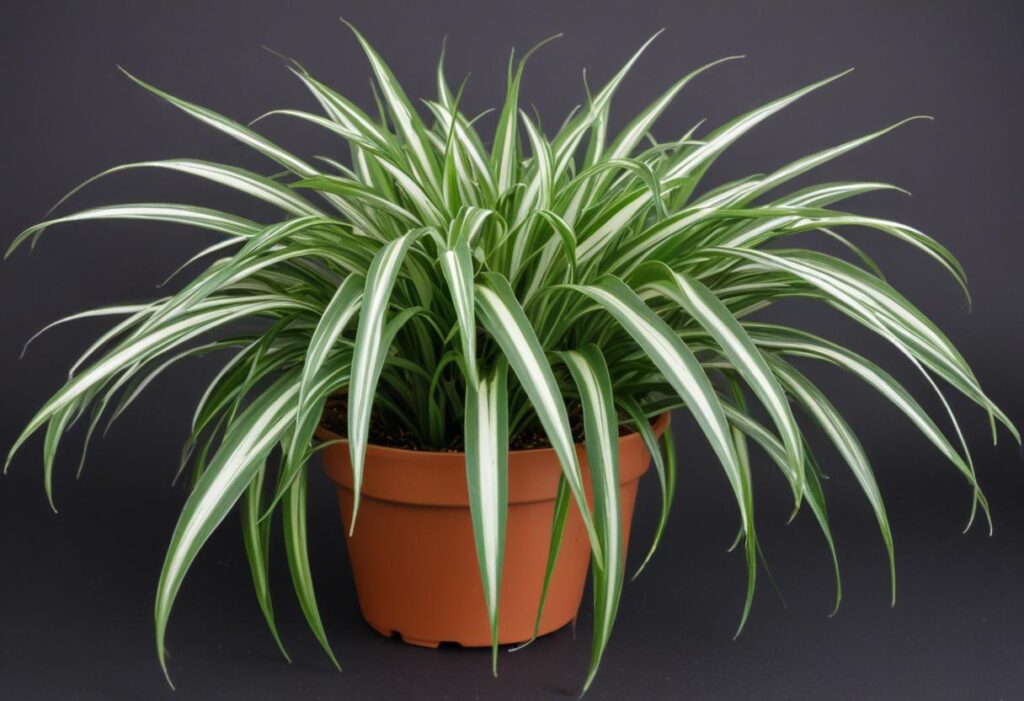
The Spider Plant, scientifically known as Chlorophytum comosum, is a beloved indoor plant that is celebrated for its attractive foliage and ease of care. Originating from South Africa, the Spider Plant features arching leaves that are green with white or yellow stripes, giving it a distinctive and decorative appearance. This plant is particularly well-suited for hanging baskets, where its long, slender leaves can cascade gracefully, adding a touch of elegance to any room.
Temperature: 65-75°F (18-24°C)
Watering: Keep soil evenly moist; water when the top inch of soil is dry.
Fertilizer: Feed every 2-4 weeks during the growing season with a balanced fertilizer.
Container: Hanging basket or standard pot with drainage holes.
Size: Grows about 1-2 feet tall and 1-2 feet wide.
3. Peace Lily (Spathiphyllum)
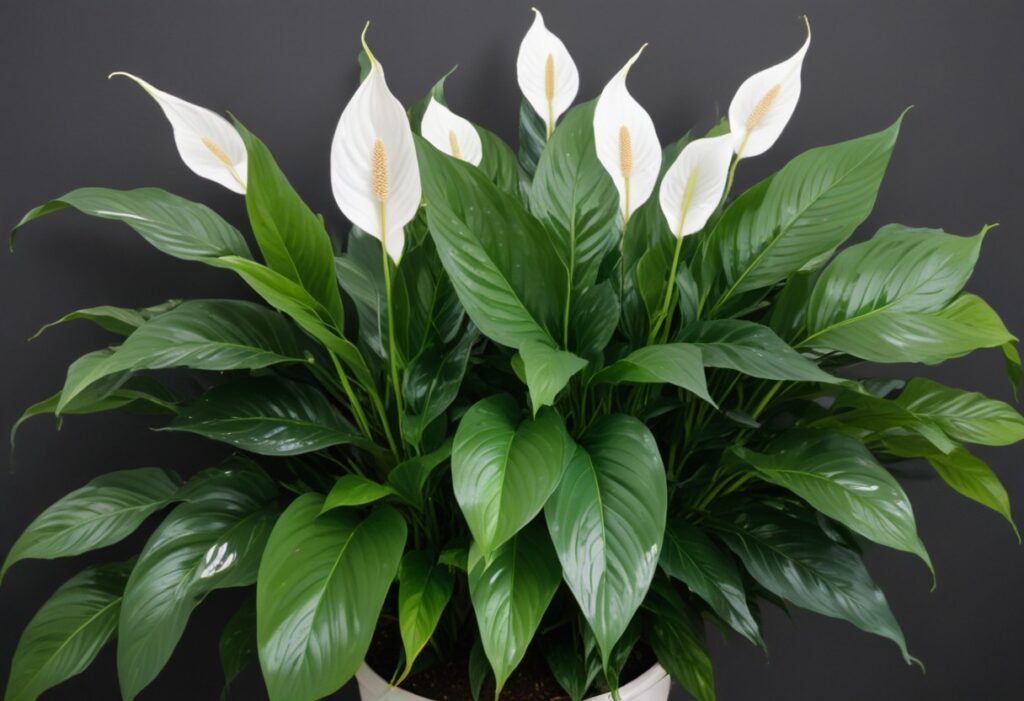
The Peace Lily, or Spathiphyllum, is a popular indoor plant known for its lush, dark green leaves and stunning white flowers. Native to tropical regions of the Americas and Southeast Asia, the Peace Lily brings a touch of natural beauty to any indoor space. Its elegant white blooms, which resemble the shape of a calla lily, make it a favorite for both home and office settings. The plant typically blooms in the spring and can continue to produce flowers throughout the year under the right conditions
Temperature: 65-80°F (18-27°C)
Watering: Keep soil consistently moist but not waterlogged, water when the top inch of soil is dry.
Fertilizer: Feed every 6-8 weeks with a balanced houseplant fertilizer.
Container: Plastic or ceramic pot with good drainage.
Size: Grows 1-4 feet tall and 1-4 feet wide.
4. Pothos (Epipremnum aureum)
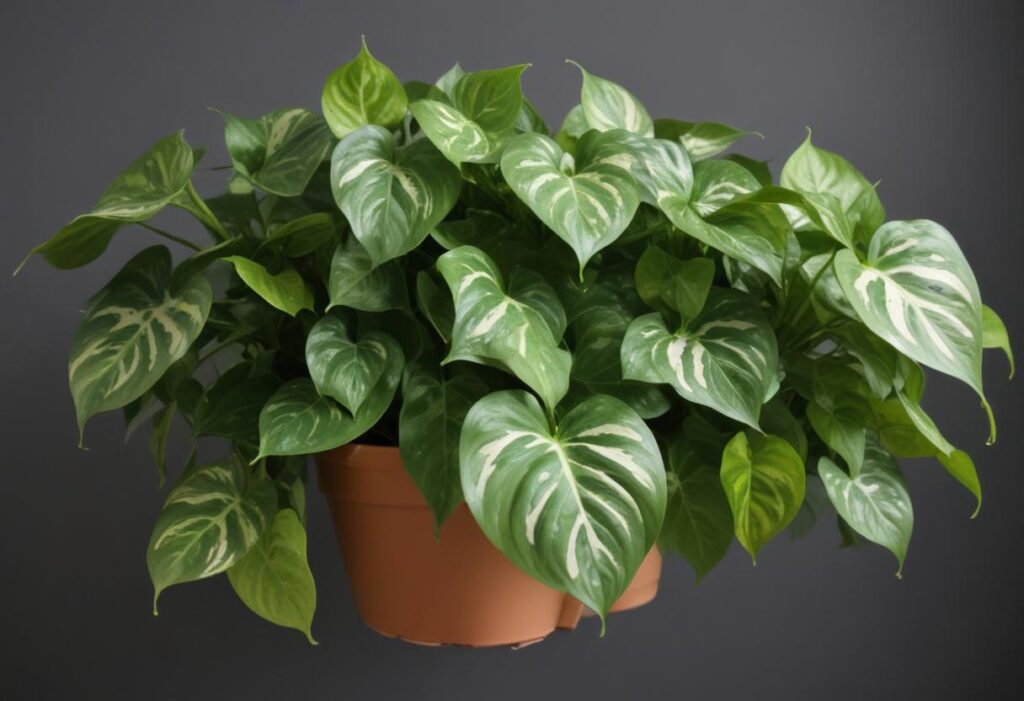
Pothos, also known as Devil’s Ivy or Epipremnum aureum, is a versatile and resilient indoor plant beloved for its attractive, heart-shaped leaves and trailing vines. Native to the Solomon Islands, Pothos has become a popular houseplant worldwide due to its easy care and adaptability to various indoor conditions. The plant features glossy leaves that come in a range of colors, from vibrant green to variegated patterns of white, yellow, or light green. Its trailing nature makes it an excellent choice for hanging baskets or training along shelves and walls.
Temperature: 60-80°F (15-27°C)
Watering: Allow soil to dry between waterings; water every 1-2 weeks.
Fertilizer: Feed monthly during the growing season with a balanced liquid fertilizer.
Container: Hanging basket or standard pot with drainage holes.Size: Can grow 6-10 feet long as a vine.
5. Philodendron
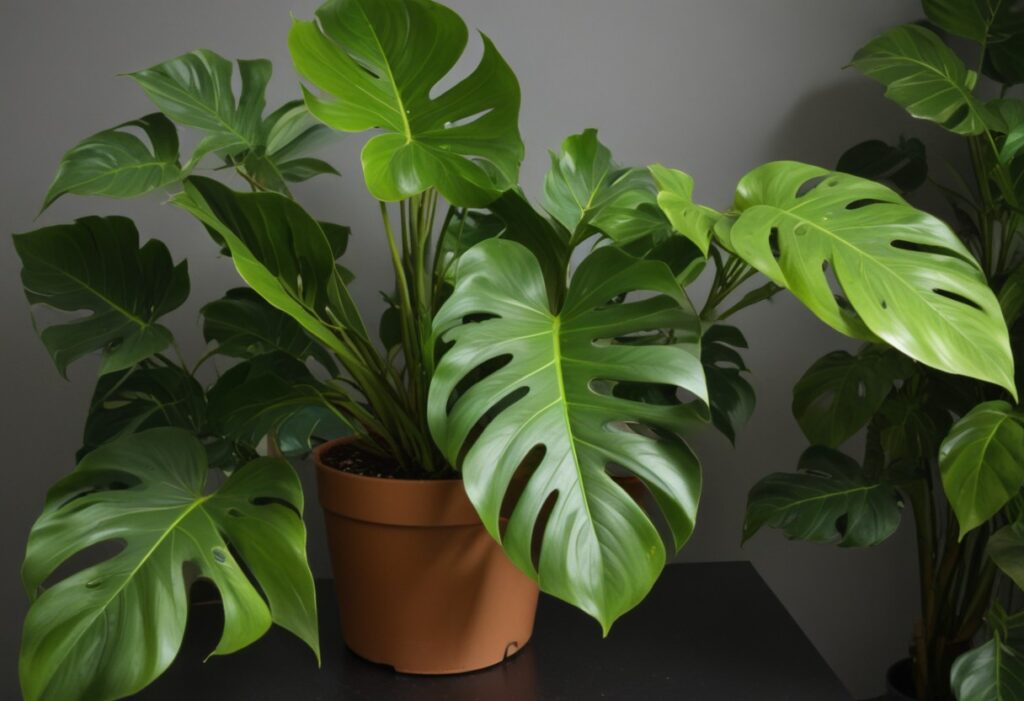
Philodendrons are a diverse group of tropical plants known for their lush, green foliage and ease of care, making them a popular choice for indoor plant enthusiasts. Originating from the rainforests of Central and South America, Philodendrons thrive in warm, humid environments but are adaptable to various indoor conditions. They come in a wide range of varieties, from climbing vines to bushy, upright types, each adding a unique touch of greenery to home and office interiors.
Philodendrons are particularly appreciated for their attractive leaves, which can be heart-shaped, lobed, or deeply cut, depending on the species. The leaves are usually glossy and range in color from deep green to shades of red, purple, or even variegated patterns
Temperature: 60-75°F (15-24°C)
Watering: Keep soil evenly moist; water when the top inch of soil is dry.
Fertilizer: Feed every 4-6 weeks with a balanced houseplant fertilizer.
Container: Hanging basket or standard pot with drainage holes.
Size: Grows 1-6 feet tall and 1-3 feet wide, depending on the species
6. ZZ Plant (Zamioculcas zamiifolia)

The ZZ Plant, or Zamioculcas zamiifolia, is a striking and resilient indoor plant known for its glossy, dark green leaves and ability to thrive in low-light conditions. Originating from East Africa, the ZZ Plant has gained popularity worldwide for its attractive appearance and low-maintenance requirements, making it an ideal choice for both beginners and busy individuals.
The ZZ Plant features thick, waxy leaves that grow in a graceful, feather-like pattern from a central stem. The leaves are a deep, rich green, giving the plant a lush and healthy appearance
Temperature: 60-75°F (15-24°C)
Watering: Allow soil to dry out between waterings; water every 2-3 weeks.
Fertilizer: Feed every 6 months with a balanced fertilizer
Container: Well-draining pot (terra cotta or plastic with drainage holes).
Size: Typically grows 2-3 feet tall and wide.
7. Aloe Vera
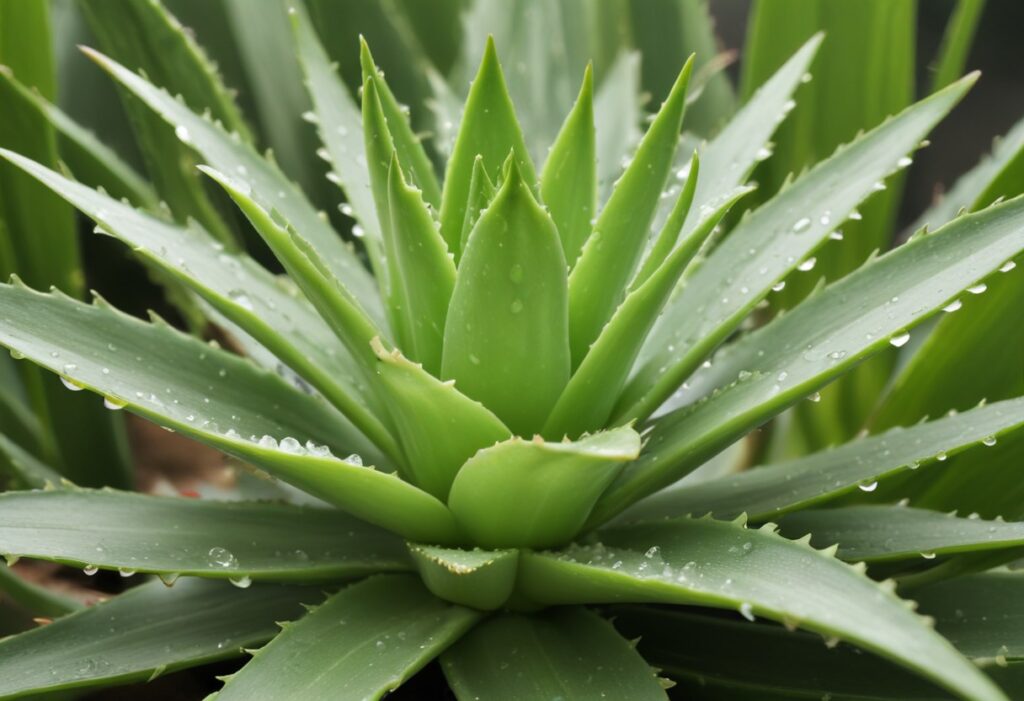
Aloe Vera is a well-known succulent plant celebrated for its medicinal properties and low-maintenance care. Originating from the Arabian Peninsula, Aloe Vera has spread across the globe, both as a popular houseplant and a valuable component in traditional medicine. Its thick, fleshy leaves, which grow in a rosette pattern, are filled with a gel that is widely used for its healing and soothing properties, particularly for skin conditions and minor burns.
Aloe Vera is an excellent indoor plant due to its tolerance for neglect and ability to thrive in a variety of indoor conditions. It prefers bright, indirect light and can even handle direct sunlight for a few hours a day
Temperature: 55-80°F (13-27°C)
Watering: Allow soil to dry completely between waterings; water every 3 weeks or so.
Fertilizer: Feed once in spring and once in summer with a diluted 10-40-10 houseplant fertilizer.
Container: Terra cotta or plastic pot with good drainage.
Size: Grows 1-2 feet tall and 1-2 feet wide
8. Succulents (Various Types)
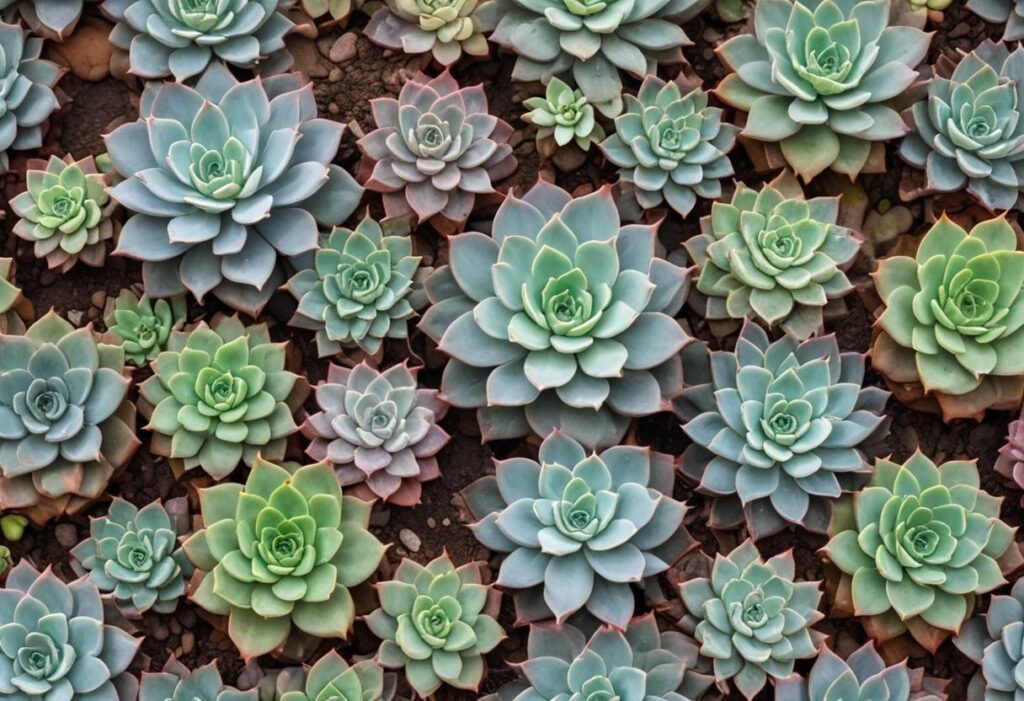
Succulents are a diverse group of plants known for their thick, fleshy leaves and ability to store water, making them incredibly drought-tolerant and easy to care for. Originating from arid regions around the world, succulents have become popular indoor plants due to their unique shapes, vibrant colors, and low-maintenance requirements. They come in a wide variety of species, each with its own distinct appearance and growth habit, providing endless options for creating interesting and varied indoor plant displays.
Temperature: 60-80°F (15-27°C)
Watering: Allow soil to dry completely between waterings; water every 2-4 weeks.
Fertilizer: Feed monthly during the growing season with a cactus or succulent fertilizer.
Container: Small, shallow pots with excellent drainage.
Size: Varies widely, typically 2-12 inches tall and wide.
9. Fiddle Leaf Fig (Ficus lyrata)

The Fiddle Leaf Fig, scientifically known as Ficus lyrata, is a striking indoor plant admired for its large, violin-shaped leaves and dramatic presence. Native to the tropical regions of West Africa, this plant has become a favorite among interior designers and plant enthusiasts for its bold and architectural appearance. The Fiddle Leaf Fig can grow quite tall, making it an excellent choice for adding a touch of greenery to large rooms and spaces with high ceilings.
One of the main attractions of the Fiddle Leaf Fig is its stunning foliage. The leaves are broad, glossy, and dark green, with prominent veins that add to their distinctive look
Temperature: 60-75°F (15-24°C)
Watering: Keep soil evenly moist; water when the top inch of soil is dry.
Fertilizer: Feed monthly during the growing season with a balanced fertilizer.
Container: Large, sturdy pot with good drainage.
Size: Can grow up to 10 feet tall indoors.
10. Rubber Plant (Ficus elastica)
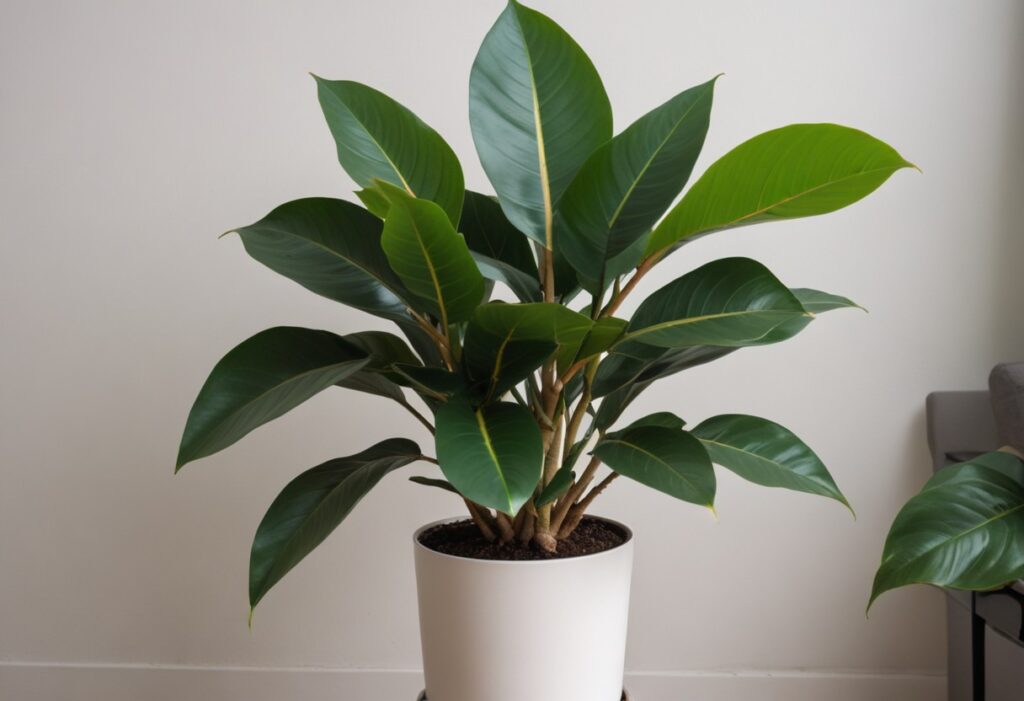
The Rubber Plant, scientifically known as Ficus elastica, is a popular indoor plant prized for its large, glossy leaves and robust nature. Native to Southeast Asia, the Rubber Plant can grow impressively tall, making it an excellent choice for adding a touch of greenery to larger indoor spaces. Its leaves are typically dark green, though some varieties feature burgundy or variegated patterns, adding visual interest to its overall appearance.
One of the key attractions of the Rubber Plant is its relatively low maintenance requirements
Temperature: 60-75°F (15-24°C)
Watering: Allow the top inch of soil to dry out between waterings.
Fertilizer: Feed monthly during the growing season with a balanced houseplant fertilizer.
Container: Large pot with good drainage.
Size: Typically grows 6-10 feet tall indoors.
11. Dracaena
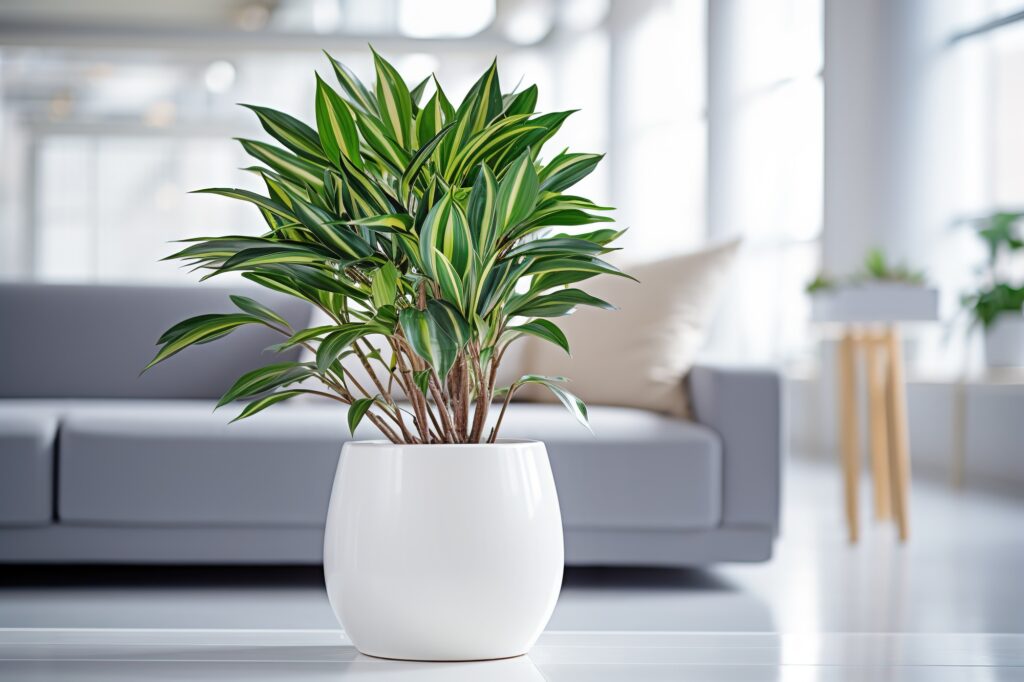
Dracaena is a diverse genus of plants that includes several popular indoor varieties known for their striking foliage and ease of care. Originating from Africa, Asia, and Central America, Dracaenas are valued for their architectural form and vibrant, often variegated leaves. Common indoor varieties include Dracaena marginata (Madagascar Dragon Tree), Dracaena fragrans (Corn Plant), and Dracaena reflexa (Song of India), each offering unique visual appeal and adaptability to indoor environments.
emperature: 65-75°F (18-24°C)
Watering: Keep soil lightly moist, water when the top inch of soil is dry.
Fertilizer: Feed every 2-4 weeks during the growing season with a balanced liquid fertilizer
Container: Medium to large pot with good drainage.
Size: Grows 2-10 feet tall, depending on the species.
12. Parlor Palm (Chamaedorea elegans)
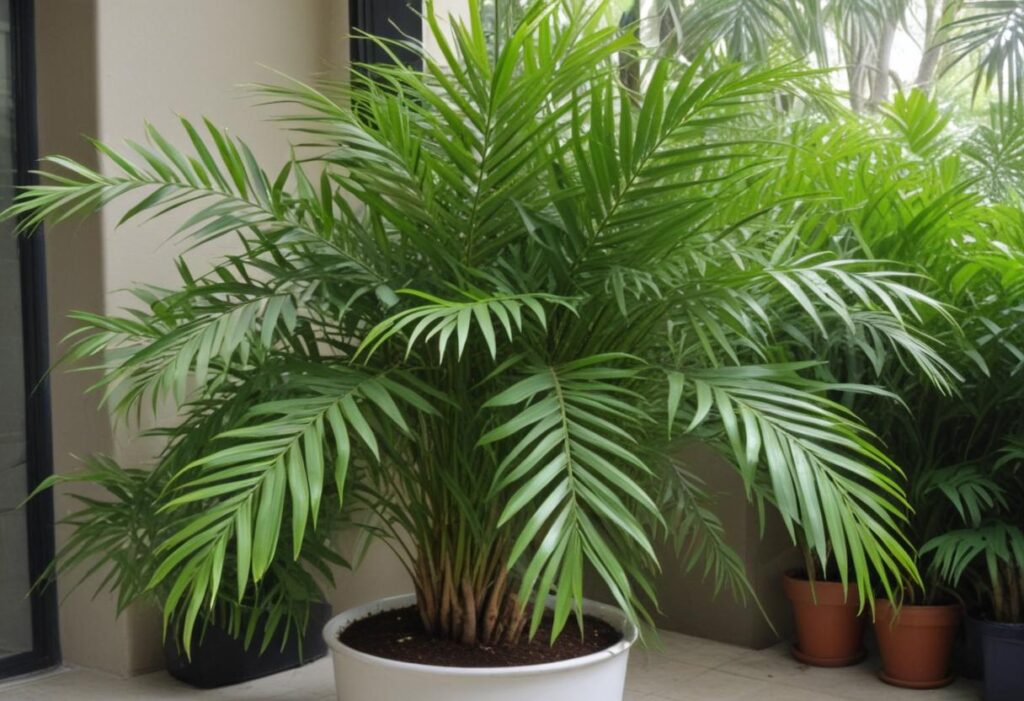
The Parlor Palm, or Chamaedorea elegans, is a classic and elegant indoor plant that has been a favorite for over a century. Native to the rainforests of Mexico and Guatemala, this plant is well-suited for indoor environments due to its ability to thrive in low light and its compact, graceful appearance. The Parlor Palm features delicate, arching fronds that add a touch of tropical elegance to any space, making it an excellent choice for homes and offices alike.
Temperature: 65-80°F (18-27°C)
Watering: Keep soil evenly moist; water when the top inch of soil is dry.
Fertilizer: Feed every 4-6 weeks during the growing season with a balanced houseplant fertilizer.
Container: Small to medium pot with drainage holes.
Size: Grows 2-6 feet tall and 2-3 feet wide.
13. Chinese Evergreen (Aglaonema)
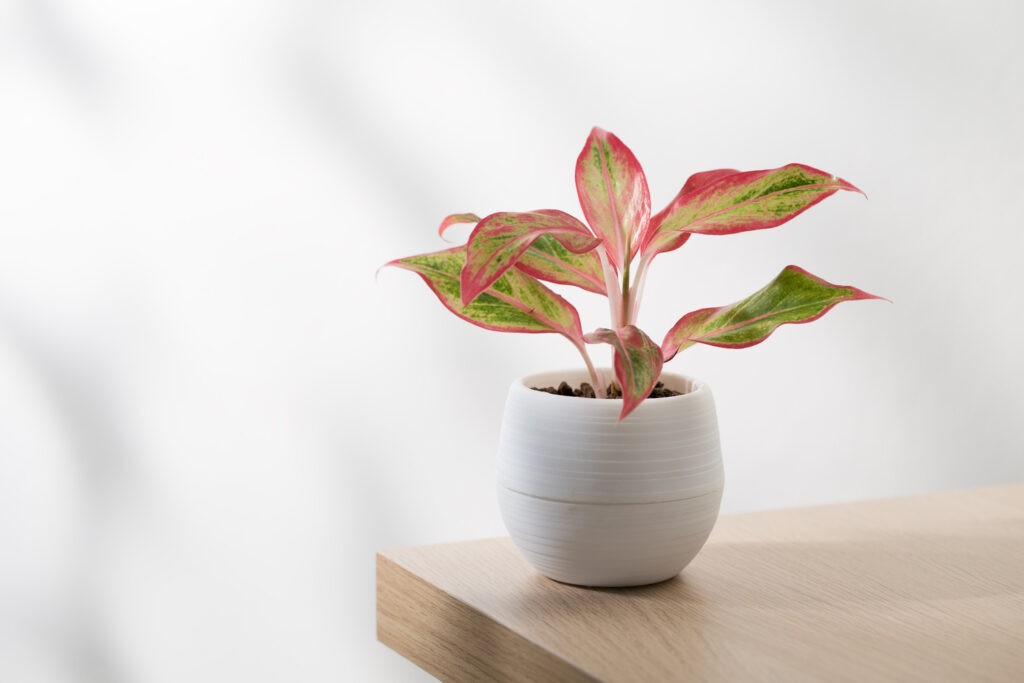
Chinese Evergreens, or Aglaonema, are popular indoor plants known for their striking foliage and robust nature. Originating from the tropical and subtropical regions of Asia, these plants are appreciated for their beautiful, often variegated leaves, which come in a variety of colors and patterns. From deep green with silver markings to vibrant red and pink hues, Chinese Evergreens can add a splash of color and texture to any indoor space.
Temperature: 65-80°F (18-27°C)
Watering: Allow the top inch of soil to dry out between waterings.
Fertilizer: Feed every 6-8 weeks with a balanced houseplant fertilizer.
Container: Medium pot with good drainage.
Size: Typically grows 1-3 feet tall and 1-2 feet wide
14. Boston Fern (Nephrolepis exaltata)
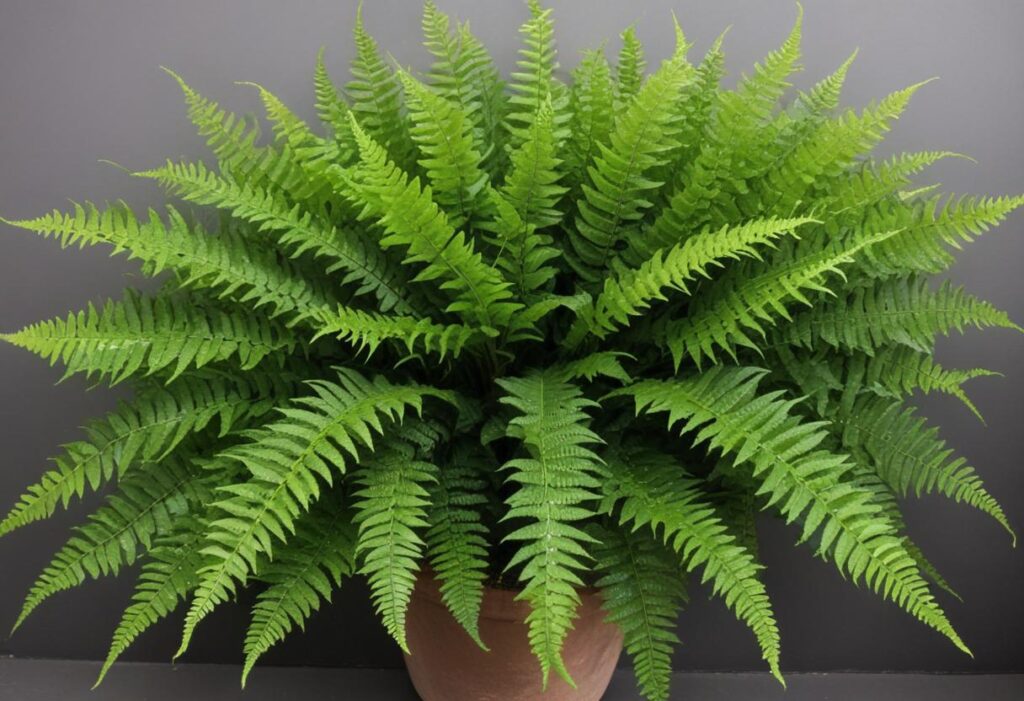
The Boston Fern, or Nephrolepis exaltata, is a classic and elegant indoor plant known for its lush, feathery fronds and vibrant green color. Originating from tropical regions around the world, Boston Ferns are admired for their graceful appearance and ability to thrive in indoor environments. They are particularly popular for hanging baskets or elevated planters, where their cascading fronds can create a stunning visual effect.
Temperature: 60-75°F (15-24°C)
Watering: Keep soil consistently moist but not waterlogged, water regularly.
Fertilizer: Feed every 2-4 weeks during the growing season with a balanced fertilizer.
Container: Hanging basket or shallow pot with good drainage.
Size: Grows 1-3 feet tall and 2-3 feet wide.
15. Jade Plant (Crassula ovata)
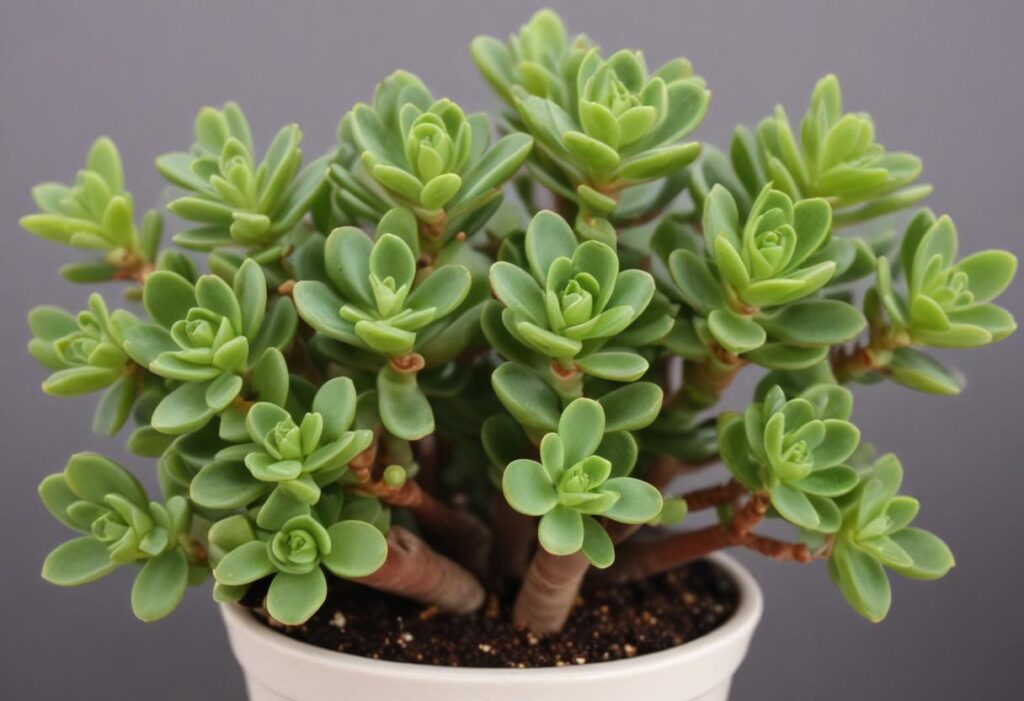
The Jade Plant, or Crassula ovata, is a popular succulent known for its thick, fleshy leaves and tree-like appearance. Native to South Africa and Mozambique, the Jade Plant is often associated with good luck and prosperity, making it a favorite in homes and offices. Its leaves are typically bright green, although some varieties have red edges, adding a touch of color to its overall appearance. The Jade Plant’s ability to store water in its leaves makes it highly drought-tolerant and easy to care for.
Temperature: 55-75°F (13-24°C)
Watering: Allow soil to dry completely between waterings; water every 2-3 weeks.
Fertilizer: Feed every 6 months with a balanced liquid fertilizer.
Container: Heavy, shallow pot with good drainage.
Size: Typically grows 1-3 feet tall and wide.
17. Cast Iron Plant (Aspidistra elatior)
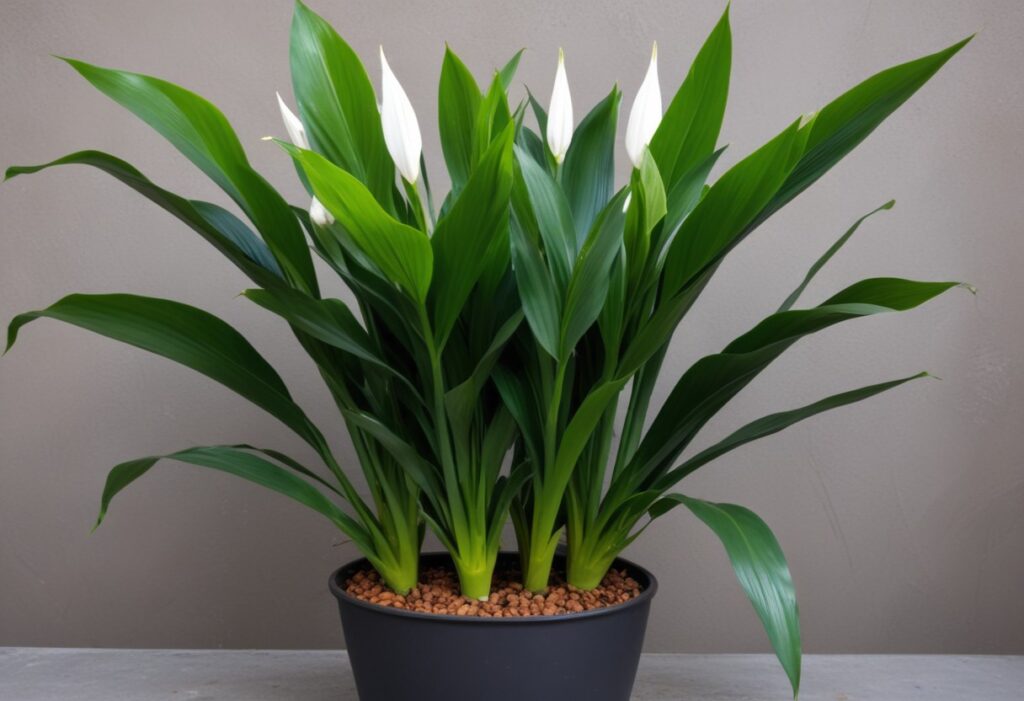
The Cast Iron Plant, or Aspidistra elatior, is a hardy and resilient indoor plant known for its ability to thrive in low light and withstand neglect. Native to the forests of Japan and Taiwan, the Cast Iron Plant is aptly named for its tough, durable nature. Its long, lance-shaped leaves are typically dark green and can add a touch of elegance and greenery to any indoor space, making it a popular choice for homes and offices.
17. Bird’s Nest Fern (Asplenium nidus)
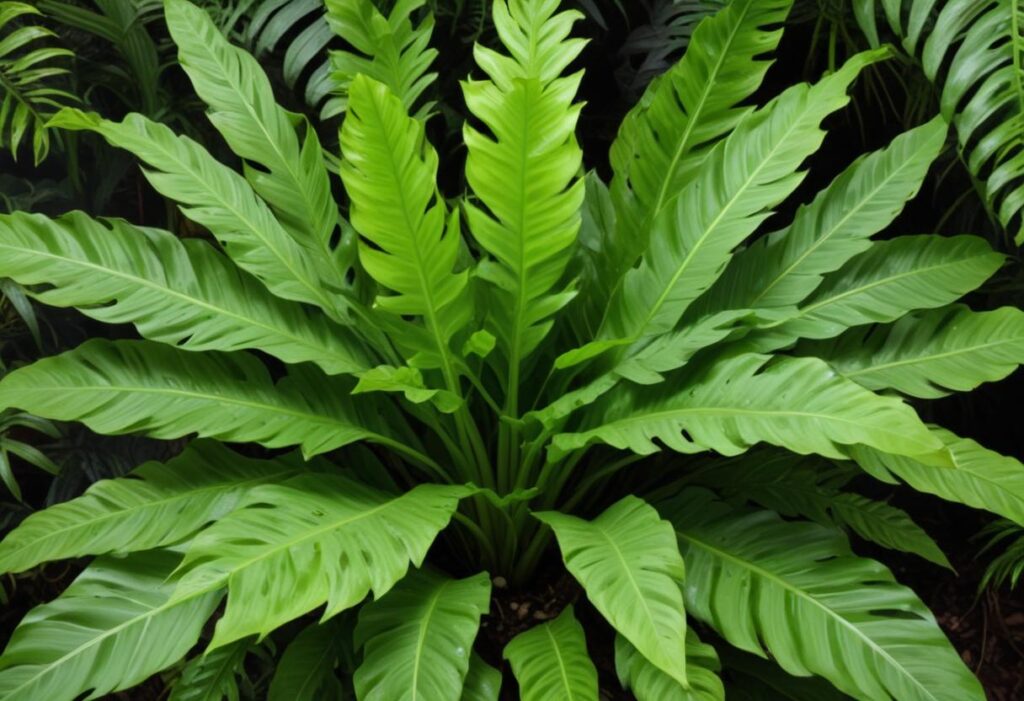
The Bird’s Nest Fern, or Asplenium nidus, is a distinctive and attractive indoor plant known for its rosette of large, wavy fronds. Native to tropical regions of Southeast Asia, Australia, and Hawaii, this fern gets its name from the nest-like appearance of its foliage. The fronds are typically bright green and have a glossy texture, adding a touch of freshness and tropical charm to any indoor space.
Temperature: 60-80°F (15-27°C)
Watering: Keep soil consistently moist but not waterlogged;,water when the top inch of soil is dry.
Fertilizer: Feed every 4-6 weeks during the growing season with a balanced houseplant fertilizer.
Container: Medium pot with good drainage.
Size: Grows 1-2 feet tall and wide.
18. Maidenhair Fern (Adiantum)

The Maidenhair Fern, belonging to the Adiantum genus, is a delicate and elegant indoor plant prized for its lacy foliage and graceful appearance. Native to temperate regions around the world, Maidenhair Ferns are known for their distinctive fronds, which are composed of small leaflets arranged in a fan-like pattern. These ferns add a touch of natural beauty and softness to any indoor space, making them a popular choice for homes, offices, and conservatories.
Temperature: 60-75°F (15-24°C)
Watering: Keep soil consistently moist but not waterlogged; water regularly.
Fertilizer: Feed every 4-6 weeks during the growing season with a balanced houseplant fertilizer.
Container: Shallow pot with good drainage.
Size: Grows 1-2 feet tall and wide.
19. Anthurium
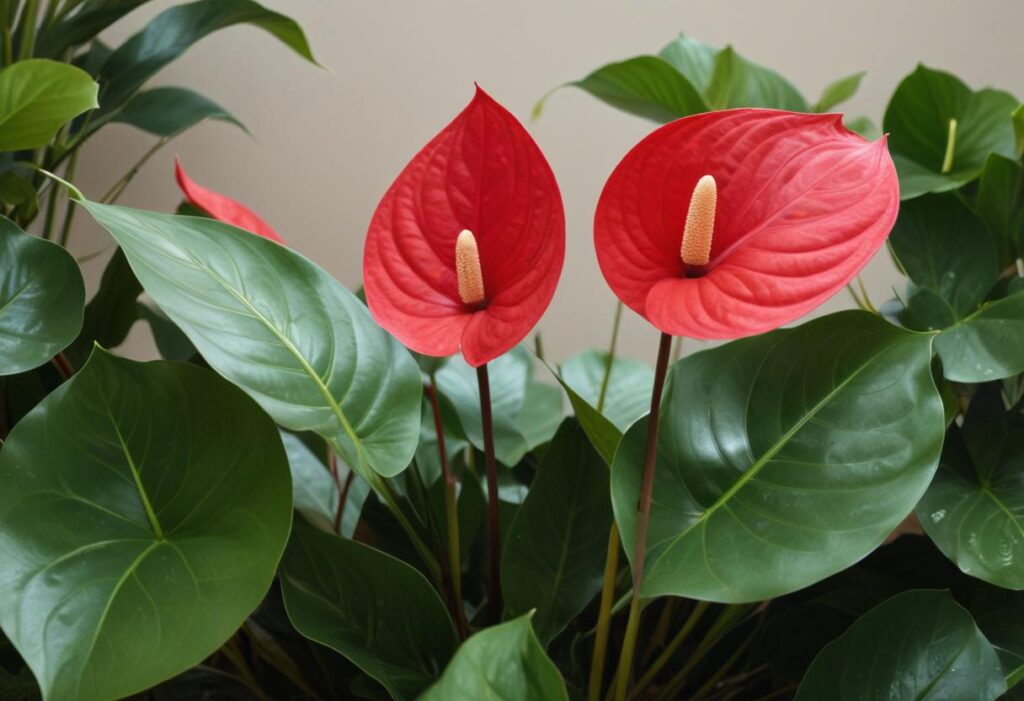
Anthuriums, known for their vibrant, heart-shaped flowers and glossy foliage, add a striking touch of color to indoor spaces. These plants thrive in indirect light and require consistently moist soil, making them a bit more demanding but highly rewarding for their ornamental beauty. Crotons, with their bold, variegated leaves, are another visually appealing choice. They prefer bright light and regular watering, which keeps their colorful foliage vibrant. Lucky Bamboo, often associated with good fortune, can grow in both water and soil and requires low light, making it an easy-care plant for beginners.
Temperature: 65-80°F (18-27°C)
Watering: Keep soil consistently moist but not waterlogged; water when the top inch of soil is dry.
Fertilizer: Feed every 6-8 weeks with a high-phosphorus fertilizer to promote flowering.
Container: Medium pot with good drainage.
Size: Grows 1-2 feet tall and wide.
20. Croton (Codiaeum variegatum)
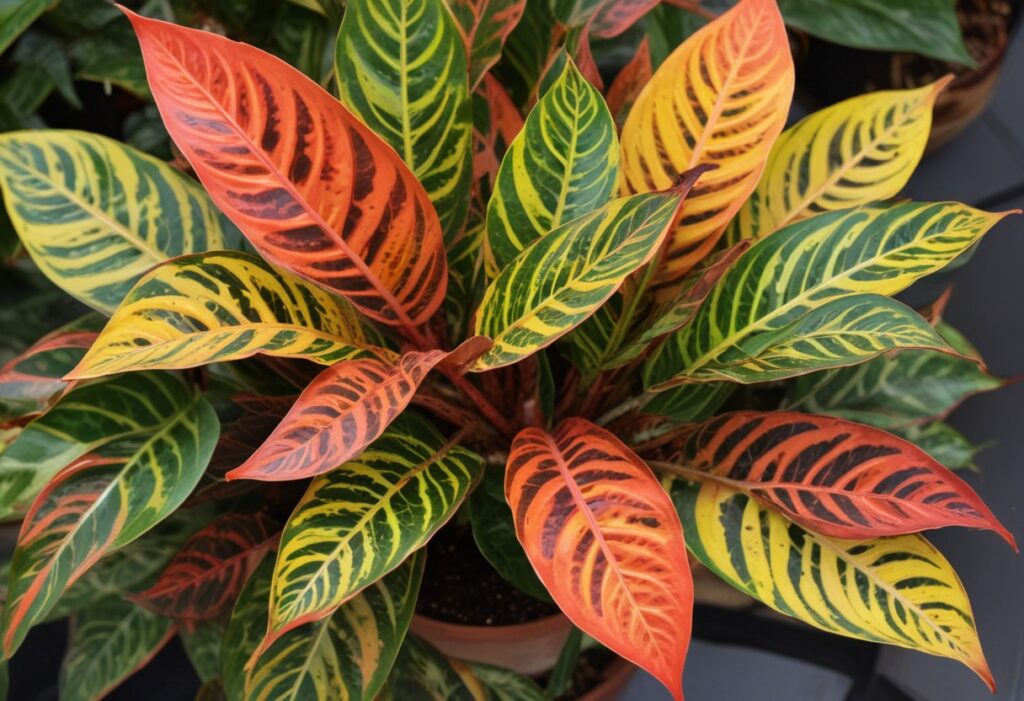
Croton (Codiaeum variegatum) is a vibrant indoor plant known for its stunningly colorful foliage, which can range from green to red, orange, and yellow, making it a popular choice for brightening up indoor spaces. Lucky Bamboo (Dracaena sanderiana) is another unique plant often grown in water rather than soil, symbolizing good fortune and positive energy. Orchids, with their elegant and exotic flowers, add a touch of sophistication to any room, although they can be a bit challenging to care for due to their specific humidity and light requirements. Begonias, on the other hand, are more forgiving and come in various types, each offering beautiful blooms and attractive leaves. The Bird’s Nest Fern (Asplenium nidus) is admired for its lush, wavy fronds, thriving in low to moderate light and high humidity, making it ideal for bathrooms or kitchens
Temperature: 60-80°F (15-27°C)
Watering: Keep soil evenly moist; water when the top inch of soil is dry.
Fertilizer: Feed every 4-6 weeks during the growing season with a balanced liquid fertilizer.
Container: Medium pot with good drainage.
Size: Typically grows 2-4 feet tall and 1-2 feet wide.

